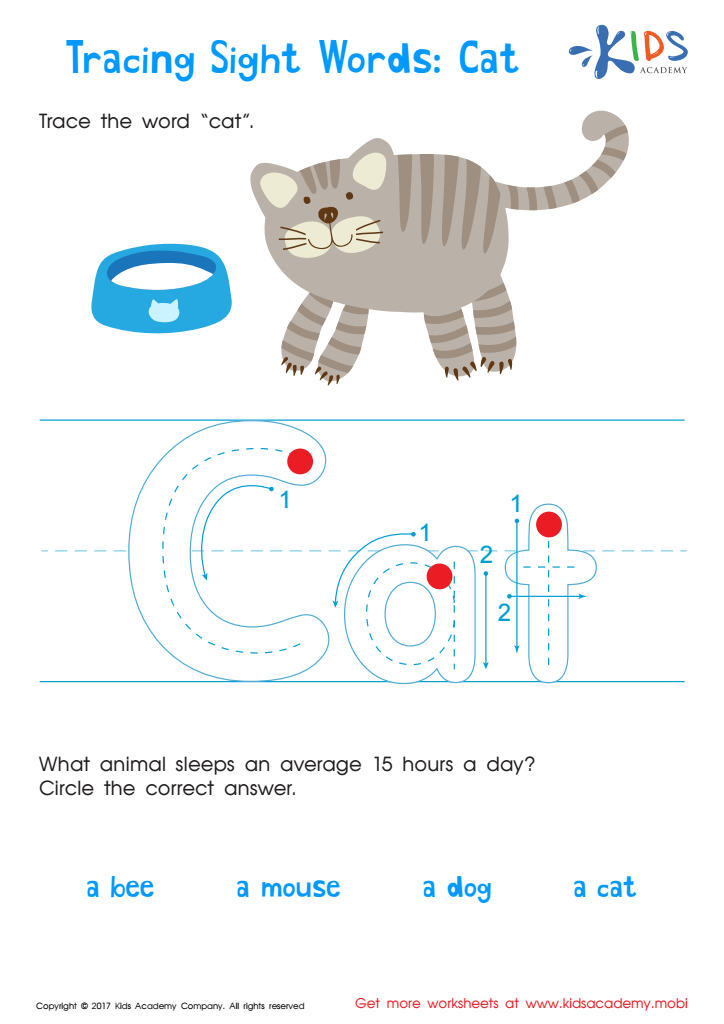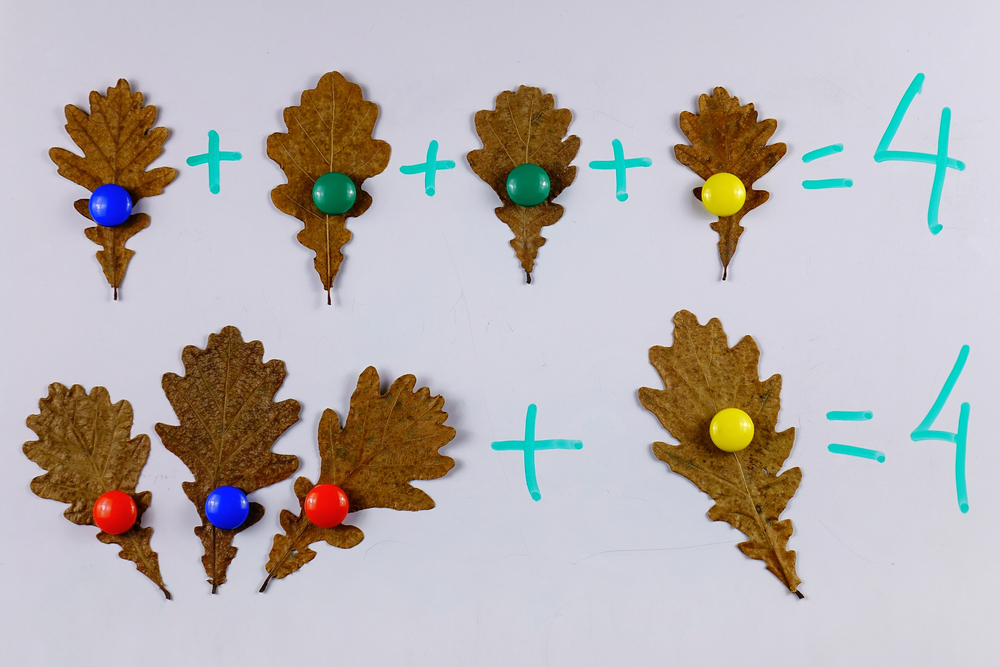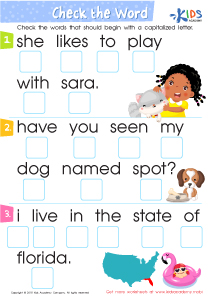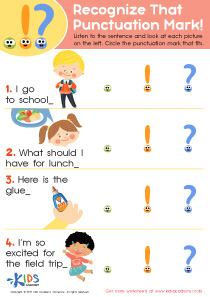Sight word recognition Normal Tracing Words Worksheets for Ages 4-5
3 filtered results
-
From - To
Introduce your child to the world of reading with our Sight Word Recognition Normal Tracing Words Worksheets, designed specifically for ages 4-5. These engaging worksheets help young learners develop vital reading skills by tracing common sight words, reinforcing their understanding through repetition and practice. Each worksheet features a fun and interactive approach, encouraging children to improve their handwriting while building confidence in word recognition. Perfect for home or classroom use, these resources ensure that early learners are well-prepared for future literacy challenges. Unlock your child's potential and make learning enjoyable with our curated selection of sight word tracing activities!


Cat Printable Sight Words Worksheet


Dog Worksheet Sight Words Worksheet
Sight word recognition is critical for early literacy development, especially for children aged 4-5. At this age, children are beginning to build foundational reading skills, and recognizing sight words—a group of commonly used words that students are encouraged to memorize as a whole—helps them gain confidence and fluency in reading.
Normal tracing words, which involves visually tracing the shapes of letters and words, enhances motor skills and reinforces the connection between letters and their sounds. This combination of sight recognition and fine motor practice not only aids in vocabulary development but also before they learn to read phonetically.
Understanding sight words allows young learners to engage in early reading activities, opening avenues for comprehension and communication as they advance in their education. Parents and teachers can support this crucial stage by incorporating fun activities—such as flashcards, games, or even creative writing-focused exercises—that emphasize these words. This assistance not only fosters an appreciation for reading but also lays the groundwork for academic success, as strong literacy skills are linked to better performance in all subject areas. Therefore, recognizing and supporting the development of sight word recognition is vital for nurturing lifelong learners.
 Assign to My Students
Assign to My Students















